Did you know that 85% of people aged 12-24 experience some form of acne1? This common skin condition can be frustrating. Many try various treatments to achieve clear skin. But some acne products might actually make breakouts worse.
This surprising effect is called skin purging. It’s more common than most people realize. Let’s explore why this happens and how to deal with it.
Skin purging occurs when certain acne treatment ingredients speed up skin cell turnover. These include salicylic acid and retinoids. They bring hidden blemishes to the surface faster than usual.
This process can cause a temporary increase in breakouts. It’s important to know the difference between purging and bad reactions. Understanding this can help you stick with effective treatments.
We’ll explore the causes of skin purging and how to identify it. You’ll learn ways to minimize its effects when trying new acne treatments. This knowledge will help you make better choices for your skin care.
Key Takeaways
- Skin purging is a common side effect of certain acne treatments that accelerate cell turnover
- Purging brings pre-existing comedones to the surface, causing a temporary increase in breakouts
- Distinguishing between purging and adverse reactions is crucial for optimizing your skincare routine
- Gradually incorporating new products and choosing non-comedogenic formulas can minimize purging effects
- Understanding the purging process can help you make informed decisions about your acne treatment journey
Visit us for top reviews on beauty supplies. We cover acrylic nails, nail polish remover, and hair care products. Find info on skincare, moisturizers, and vegan beauty options. We also review makeup, anti-aging creams, and beauty tools.
Understanding Skin Purging: When Acne Treatment Causes Temporary Breakouts
New acne treatments can trigger skin purging. This happens when active ingredients speed up cell turnover. Microcomedones rise to the surface, appearing as pimples2.
Don’t worry! This temporary breakout shows the product is working. It’s clearing out your pores effectively.
What Is Skin Purging and How Does It Occur?
Skin purging occurs when acne treatments accelerate skin cell renewal. Retinoids and exfoliating acids are common culprits. Retinol is the main cause, typically lasting 4-6 weeks2.
These ingredients unclog pores and shed dead skin cells. This pushes existing microcomedones to the surface faster. The result? A brief increase in breakouts.
During purging, you might see minor breakouts and redness. Dry, flaky skin is also common2. Remember, this phase is temporary and leads to clearer skin.
Common Ingredients That Cause Skin Purging
Several active ingredients in skincare products can trigger purging:
- Retinoids (e.g., retinol, tretinoin): These vitamin A derivatives stimulate collagen production, regulate skin cell turnover, and increase blood flow, which can lead to skin purging3.
- Exfoliating acids (e.g., alpha-hydroxy acids, beta-hydroxy acids): These ingredients help to remove dead skin cells and unclog pores, potentially causing temporary breakouts.
- Other active ingredients: Peptides, ceramides, hyaluronic acid, jojoba oil, aloe vera, and oat oil can also expedite skin turnover and contribute to the purging process2.
Benzoyl peroxide creams may cause dryness and redness. However, they don’t typically cause skin purging3. Oral antibiotics for severe acne also don’t cause purging.
These antibiotics work by stopping bacterial growth. They also reduce fatty acids in sebum3.
I’ve learned that skin purging is a necessary evil when starting a new acne treatment. It’s a sign that the product is working to clear out my pores, even if it means dealing with a few extra breakouts in the short term.
Skin purging is a common side effect of acne treatments. It’s temporary and often leads to clearer skin. Understanding this process helps you approach skincare with confidence.
Be patient with your routine. Healthier skin is just around the corner. Check our site for top beauty product reviews and skincare tips.
Salicylic Acid: A Potential Culprit for Temporary Acne Flare-Ups
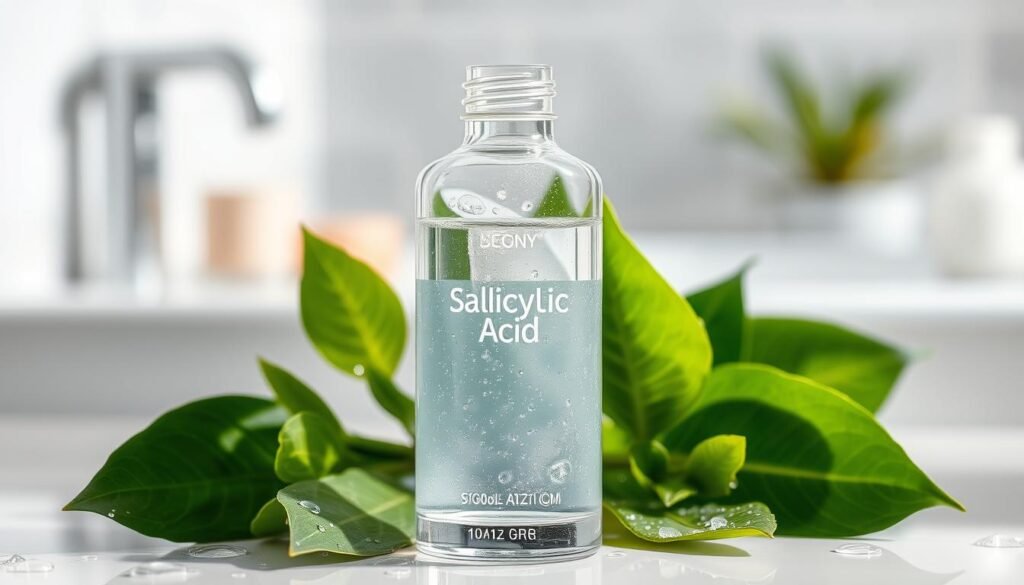
Salicylic acid in skincare products can cause an initial increase in breakouts. This common occurrence is called skin purging. It happens when acne-fighting ingredients bring hidden blemishes to the surface.
Salicylic acid penetrates deep into pores, unclogging them and reducing inflammation4. As it clears out pores, it can bring pre-existing blockages to the surface. This results in a temporary increase in breakouts.
How Salicylic Acid Works to Clear Acne
Salicylic acid is a beta-hydroxy acid that dissolves bonds between dead skin cells. It removes debris from the skin’s surface, preventing clogged pores and acne4. Its anti-inflammatory effects also reduce redness and swelling.
By targeting multiple acne-causing factors, salicylic acid effectively manages breakouts. It exfoliates and soothes the skin, making it a powerful acne-fighting ingredient.
Adjusting Your Skincare Routine to Minimize Purging Effects
To minimize purging, start with a low concentration of salicylic acid. Gradually increase usage as your skin adjusts. Be gentle with your skin and avoid over-exfoliating to prevent irritation.
Stick to a simple, non-comedogenic skincare routine focused on hydration. Be patient as your skin adapts to the new product. If you’re unsure, consult a dermatologist for personalized advice.
Everyone’s skin is unique, so what works for one may not work for another. Be patient, consistent, and attentive to your skin’s needs. This approach helps navigate purging challenges and achieve clear, healthy skin.
I recently started using a new salicylic acid serum to help with my acne, and while I did experience some initial purging, I’m amazed at how much my skin has improved after just a few weeks of consistent use.
Introducing salicylic acid may cause temporary purging but can lead to clearer skin. Understanding the process and adjusting your routine helps minimize purging effects. With consistency, you can achieve the best possible results.
Salicylic acid is excellent for clearing stubborn acne and improving overall skin health. Pair it with suitable products, a balanced diet, and good sleep habits. You’ll be on your way to a clear, radiant complexion.
Visit us for reviews on acrylic nail kits, nail polish removers, and hair color kits. We also cover hair growth serums, skincare routines, and moisturizers for dry skin. Find info on vegan beauty products, foundations for oily skin, and makeup brushes.
Distinguishing Between Skin Purging and Adverse Reactions
Skin purging and adverse reactions can be tricky to tell apart. Purging is temporary, lasting 2-6 weeks as skin adjusts to new treatments5. Adverse reactions persist until you make changes to your skincare routine or lifestyle5.
Signs of Skin Purging
Purging often happens when using new acne-fighting or anti-aging products. It causes whiteheads, red bumps, and papules in acne-prone areas5. These pimples usually clear up faster, within 8 to 10 days6.
Dermatologists say purging should end within four to six weeks of starting a new skincare routine67. If it lasts longer, it might not be purging, and you should seek professional help67.
Signs Your Skin Is Sensitive to a New Product
Adverse reactions can cause ongoing breakouts, itching, redness, and swelling. These issues can stem from various factors like hormone changes, stress, or harsh products5.
Breakouts may appear as whiteheads, blackheads, red pimples, or cystic bumps5. If symptoms persist or the product doesn’t typically cause purging, stop using it and consult a dermatologist.
| Skin Purging | Adverse Reactions |
|---|---|
| Temporary occurrence lasting 2-6 weeks | Persistent breakouts until modifications are made |
| Whiteheads, red bumps, and papules in acne-prone areas | Whiteheads, blackheads, red pimples, pus-filled pimples, and cystic bumps |
| Purge pimples disappear within 8-10 days | Breakouts may linger and cause marks |
| Caused by acne-fighting and anti-aging products | Caused by various factors, including harsh skincare products |
For healthy skin, choose non-comedogenic products and introduce new ones slowly. Check our reviews on beauty supplies like nail polish remover, hair growth serum, and moisturizer for dry skin.
We also cover the best cruelty-free makeup, foundation for oily skin, and beauty blenders. Keep coming back for more helpful beauty tips!
Factors That Increase the Risk of Breakouts Unrelated to Skin Purging

Many factors can cause breakouts besides skin purging from new acne treatments. Stress, diet, hormones, lack of sleep, and pore-clogging products can trigger acne8. Knowing these triggers helps maintain clear skin alongside acne treatments.
Sleeping in makeup is a major breakout cause. It clogs pores and builds up oil and bacteria. Harsh scrubbing or abrasive exfoliants can irritate skin and worsen breakouts.
Popping pimples introduces bacteria and causes inflammation. It can lead to scarring or dark spots9. Sharing makeup tools spreads bacteria and contributes to breakouts.
Using too many new acne products at once can overwhelm skin. During exercise, wiping sweat with a used towel transfers bacteria. Let sweat evaporate naturally or use a clean towel.
Over-washing the face can strip the skin of its natural oils, leading to dryness and potential breakouts. Aim to cleanse your face twice daily with a gentle cleanser suited to your skin type.
To minimize breakouts unrelated to skin purging, consider these tips:
- Maintain a consistent, gentle skincare routine tailored to your skin type
- Remove all makeup before bed using a non-comedogenic cleanser
- Avoid harsh scrubbing or excessive exfoliation
- Resist the temptation to pop pimples
- Use clean makeup brushes and sponges, and avoid sharing them with others
- Introduce new acne treatments gradually to assess your skin’s response
- Opt for a clean towel or allow sweat to evaporate during exercise
- Cleanse your face twice daily, avoiding over-washing
| Breakout Trigger | Prevention Tip |
|---|---|
| Sleeping in makeup | Remove all makeup before bed |
| Harsh scrubbing | Use gentle cleansing techniques |
| Popping pimples | Resist the temptation to pop or pick at acne |
| Sharing makeup products | Use clean, personal makeup tools |
| Introducing too many new products | Gradually incorporate new treatments |
| Using a towel during exercise | Allow sweat to evaporate or use a clean towel |
| Over-washing the face | Cleanse twice daily with a gentle cleanser |
Understanding breakout factors helps you make smart skincare choices. Visit us for top beauty product reviews. We cover makeup brushes, moisturizers, anti-aging creams, hair growth serums, and beauty blenders.
Tips for Introducing New Acne Treatments to Minimize Skin Purging
New acne treatments require patience and care to reduce skin purging. Some ingredients like retinoids and benzoyl peroxide can trigger purging10. Easing into new products helps your skin adapt without excessive irritation or breakouts.
The Importance of Gradually Incorporating New Products
Introduce new products slowly to minimize skin purging. Start using treatments once or twice weekly, then increase frequency gradually. This approach works well for potentially irritating products like benzoyl peroxide.
Skin purging usually lasts one to two weeks before improvement shows10. Stay patient and consistent with your new routine. Experts suggest using new products for at least four weeks11 to see true effects.
Choosing Non-Comedogenic Formulas to Reduce Clogged Pores
Pick non-comedogenic or oil-free products to minimize skin purging. Avoid pore-clogging ingredients like shea butter and heavy oils. These can worsen breakouts and extend the purging process.
Choose lightweight, water-based formulas that let your skin breathe. Proper cleansing and maintaining skin pH balance can lessen purging effects10. Use sunscreen with SPF 30 or higher to protect your skin.
Carefully select skincare products and introduce them slowly for better results. This approach helps achieve clear, glowing skin. Check back for reviews on retinol creams, acne treatments, and sunscreens for acne-prone skin.
FAQ
Can acne treatments actually cause more acne?
How can I tell the difference between skin purging and a bad reaction to a product?
What ingredients in acne treatments are most likely to cause skin purging?
How can I minimize the effects of skin purging when starting a new acne treatment?
What other factors can contribute to breakouts unrelated to skin purging?
How long does skin purging typically last?
Source Links
- Acne – Symptoms and causes – https://www.mayoclinic.org/diseases-conditions/acne/symptoms-causes/syc-20368047
- Skin purging vs. breakout: How to tell the difference – https://www.medicalnewstoday.com/articles/skin-purging-vs-breakout
- Skin Purging – What Is It and What Medications Can Cause It? – https://miiskin.com/acne/skin-purging/
- Acne – https://en.wikipedia.org/wiki/Acne
- Acne Purging vs Breakout – Acne Advice | The Independent Pharmacy – https://www.theindependentpharmacy.co.uk/acne/guides/acne-purging-vs-breakout-know-the-difference
- How to Tell If Your Skin Is Purging or Breaking Out – https://www.healthline.com/health/beauty-skin-care/skin-purging
- Is Your Skin Just “Purging” Or Breaking Out? Here’s How To Tell The Difference – https://www.health.com/skin-purging-7852167
- What Products To Avoid (And How To Heal) During A Retinol Purge – https://www.mindbodygreen.com/articles/skin-purging-vs-breakout
- Understanding Your Skin: Skin Purging vs Breakouts Explained. | Proton Health – https://www.proton-health.com/blogs/understanding-your-skin-skin-purging-vs-breakouts-explained
- How to Treat Skin Purging: 5 Expert Tips | APT Medical Aesthetics – https://www.aptmedicalaesthetics.com/blog/how-to-identify-treat-skin-purging/
- How to Tell If a Skincare Product Is Making You Break Out – https://www.health.com/condition/acne/skin-purging-acne

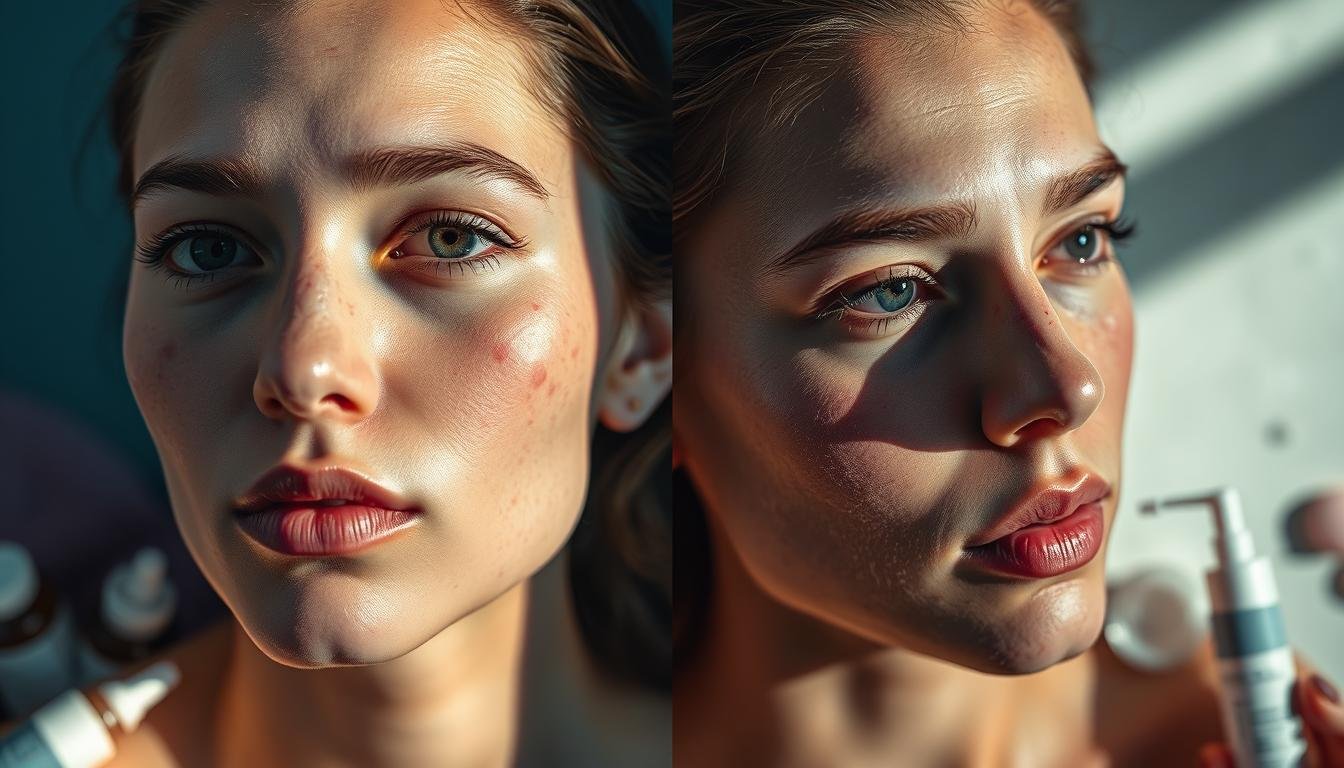
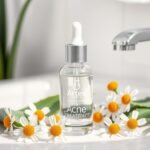
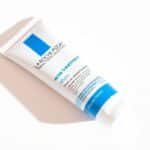
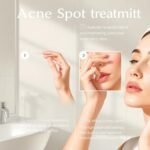
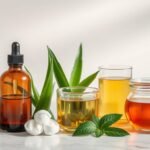

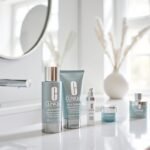
Interesting read, but isnt it ironic that we use acne treatments to fight acne, only to get more acne in return? Thoughts anyone?
Interesting take but isnt it possible that skin purging is just a marketing ploy to keep us buying more products? Thoughts?
Interesting read, but arent we just over-complicating stuff? Could it simply be that our skin just doesnt like being messed with? #JustAThought
Interesting read, but isnt it ironic that were using acne treatments that can potentially cause more acne? Makes you ponder, doesnt it? 😏
Interesting read, but ever considered the role of diet in acne? Maybe its more about what we eat than what we apply on our skin.
Diets influence cant be ignored, but its not a universal acne cure-all. Topical treatments are critical too.
Isnt it insane how we buy pricey acne treatments just to get MORE acne? Seems like a twisted money-making scam to me, guys!
Maybe its not the treatment, but your lifestyle habits causing the acne. Ever thought of that?
Interesting read, but isnt it a bit counterproductive? Acne treatment causing acne? Sounds like a twisted pharmaceutical conspiracy! Anyone else suspicious?
Interesting read, but isnt it weird to think that treating acne can cause more acne? Kinda feels like a skincare paradox!
Indeed, it seems counterproductive at first glance, but its the initial breakout before the clear-up.